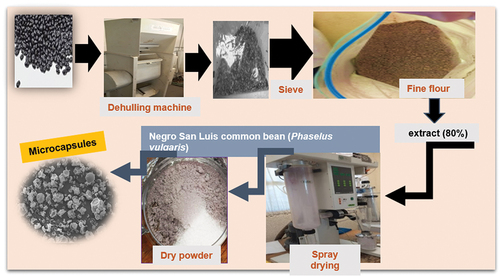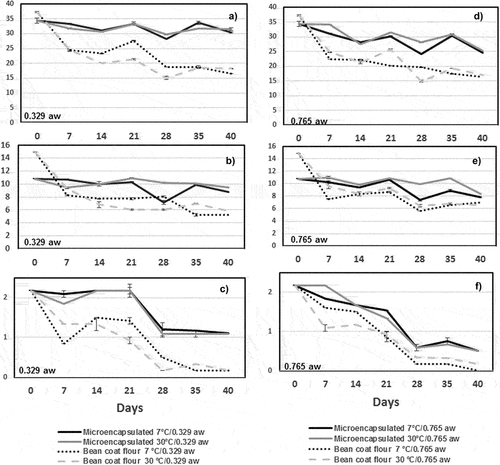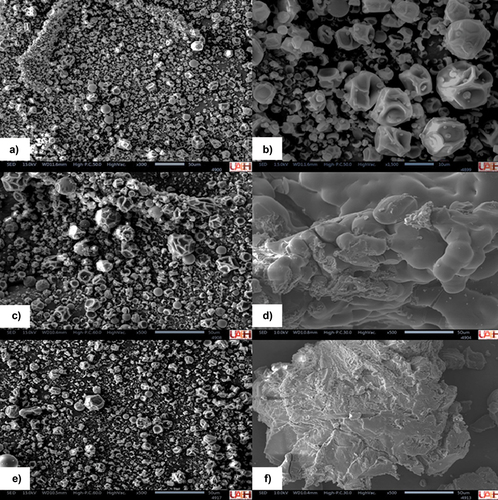Figures & data

Table 1. Central composite design for two factors: inlet air temperature (100°C–140°C) and total solids in the mix (20–30%).
Figure 1. Response surface of dependent variables: (a) microencapsulation efficiency (%), (b) total phenolic compounds (mg GAE/g), (c) total flavonoids (mg CE/g), and (d) total monomeric anthocyanins (mg C3GE/g), based on the temperature of drying air and total solids of N-Lok as wall material.

Table 2. Estimated coefficients of the adjusted model and significance level of response variables: microencapsulation efficiency, total phenols, flavonoids, monomeric anthocyanins, radical scavenging capacity (ABTS and DPPH), water activity, and humidity in microencapsulates with bean coat extract.
Figure 2. Response surface of the dependent variables: (a) Radical scavenging capacity, (b) ABTS (mg/TE/g), (c) DPPH (mg AAE/g), (d) water activity, and E) humidity (%), based on drying air temperature and total solids of N-Lok as wall material.

Table 3. Experimental verification of predicted response variables in microcapsules.
Figure 3. Stability of encapsulated compounds (total phenols, flavonoids, and anthocyanins) and bean coat flour analyzed under controlled conditions of temperature and water activities for 40 days: (a, d) total phenolic compounds (mg GAE/g); (b, e) total flavonoids (mg CE/g); and (c, f) total monomeric anthocyanins (mg C3GE/g).

Table 4. Differences (∆) in concentration of bioactive compounds (initial – final) in microencapsulates and bean coat flour under different storage conditions and half-life of the bioactive compounds (t ½).
Figure 4. Micrograph of microcapsules with extract of bean coat flour and N-Lok starch obtained by spray drying using inlet air temperature of 115°C and 28.5% solids in wall material: (a) After spray drying (zero time) 300×; (b) (zero time) 500×; (c) After 40 days at 7°C and 0.329 aw; (d) After 40 days at 7°C and 0.765 aw; (e) After 40 days at 30°C and 0.329 aw, and (f) After 40 days at 30°C and 0.765 aw.

